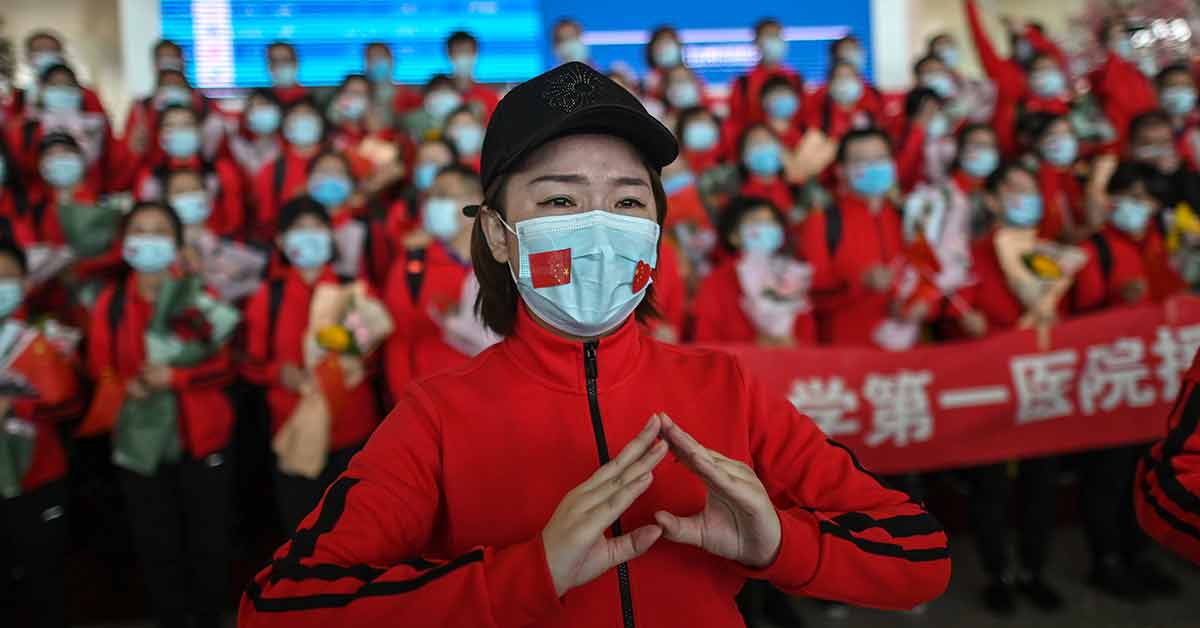The global recession brought on by the COVID-19 pandemic is almost certain to be far deeper and more protracted than the one that followed the 2008 global financial crisis. While many governments have pledged to bolster their economies with unprecedented monetary and fiscal stimulus – despite holding already-massive public debt – the best they can probably hope for is to stave off economic collapse. If they insist on turning inward – pointing fingers and erecting barriers, instead of upholding international cooperation and economic engagement – even that may become impossible.
Engagement by the United States (US) and China is especially important. In the wake of the 2008 crisis, the global economic recovery got a major boost from Sino-American cooperation, which supported individual stimulus measures (quantitative easing in the US and large-scale fiscal stimulus in China). But the COVID-19 crisis has erupted at a moment when bilateral relations – as well as international cooperation more broadly – are at their lowest point in decades, and the US has shown no inclination to improve the situation.
On the contrary, some US politicians immediately latched onto the COVID-19 crisis to argue that no country – especially China – should have such a central position in global supply chains. Moreover, US President Donald Trump’s administration has seemed more interested in reminding the public that the virus first emerged in China than in taking strong action to manage it. This has severely undermined the willingness and ability of the world’s largest economies to mount a coordinated response.
The US is wrong to disregard China’s potential to contribute to resolving the COVID-19 crisis. It is also wrong to expect that the pandemic will weaken China’s position in global supply chains.
Even if more regionalised and diversified supply chains would reduce risks, China retains considerable competitive advantages in many areas, such as electronics and machinery and equipment manufacturing. It cannot be replaced, at least not in the near term.
This is not to say that China’s role in global supply chains will not shift. But that has been happening for a decade, with a large number of low-value-added manufacturing jobs being transferred to neighbouring countries.
Far from weakening China’s position, this has enabled the country to climb the value-added ladder. The Yangtze River Delta and Guangdong province – regions that used to produce garments and shoes, and assemble electronics – have become hubs for high-tech innovation.
Meanwhile, China has worked to boost domestic consumption, thereby reducing its reliance on foreign demand. As a result, the world may now be more dependent on China than China is on the world. I believe that the COVID-19 pandemic will strengthen this dependence, not least because China is months ahead of most countries (at least) in getting a handle on the virus and reopening its economy.
To be sure, China’s draconian lockdown measures have carried high economic costs, which could possibly amount to an 8-10 percent decrease in gross domestic product (GDP) in the first quarter. But they also enabled the country to stem new infections at a time when the virus was just reaching the rest of the world. Already in mid-February, China began working to restore production in an effort to stabilise global supply chains.
As a result, China has avoided the stock-market turmoil seen in the US, where infections are rising fast and lockdowns are just beginning. Thanks to the Chinese government’s resolute action – which, to be sure, followed some initial missteps by local authorities – China may become the first country to restore economic growth, while the rest of the world is mired in a deep recession.
Unlike after the 2008 crisis, it looks like China’s government does not have to plan even more massive new investment spending. It should be enough to follow through on existing infrastructure-investment plans – including the construction of ultra-high-voltage power grids, intercity high-speed railways, and 5G networks – while taking other steps to support economic and employment recovery, such as subsidies and tax exemptions. With a fiscal deficit of less than three percent of GDP, China can certainly afford such measures.
These investments will help China to build on recent progress in even more high-tech sectors, including big data, artificial intelligence, the Internet of Things, and the industrial Internet. This will deepen China’s integration into the global technological supply chain. Not even a Sino-American decoupling will stop technological exchanges between China and the rest of the world.
Neither US resistance nor the COVID-19 pandemic will stop China from opening its services sector or becoming an increasingly attractive export destination for advanced economies and emerging-market economies. Indeed, at a time when some might be tempted to turn inward, China remains as committed as ever to globalisation. The trade, investment, and growth opportunities that this commitment generates could well be a godsend for struggling countries in the aftermath of the COVID-19 crisis.

